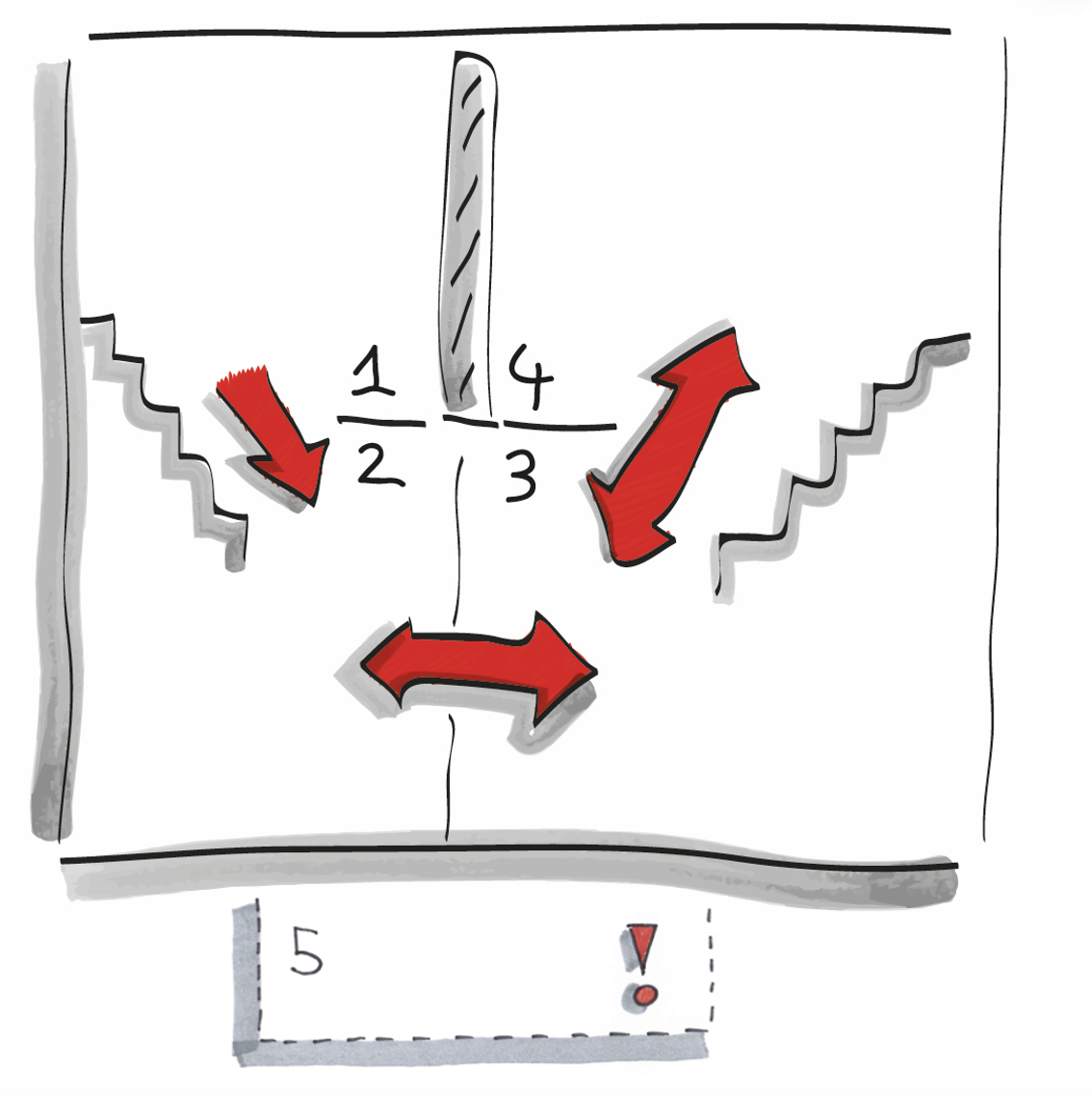In our ever-changing world, change is an inescapable companion. Whether it’s organizational restructuring, team conflicts or personal transitions, the ability to effectively navigate through change is crucial. The 5-rooms model offers a structured approach to understanding and managing change, both for yourself and to guide others through these complex processes.
Understanding the 5-rooms model
The 5-rooms model provides a metaphorical framework to help individuals and leaders through the various stages of change. Each “piece” represents a distinct phase of the transformation journey, providing a roadmap for reflection and action.
Piece 1: Satisfaction
The first room symbolizes satisfaction. Here, all is well, the world is in order. However, excessive satisfaction can lead to complacency. When disruptions occur, such as visible crises or conflicts, it becomes impossible to stay in Room 1. We’re inevitably pushed into Room 2.
Room 2: Denial
Room 2 represents denial. This room is characterized by the rejection of current events and the overwhelming presence of negative emotions. In the face of loss or significant change, it’s common to feel fear, insecurity and loneliness. In Room 2, we instinctively deny these feelings, often blaming external factors. This denial serves as a protective mechanism, shielding us from emotional overload.
Room 3: Confusion
Entering Room 3, we encounter confusion. Each crisis brings its own uncertainties, making it difficult to see the way forward. We yearn for clarity, whether in the form of renewal or a return to basics. But it’s not an easy journey. Often, we oscillate between denial and confusion, feeling anger and frustration. Some may even resign themselves to a state of stagnation, taking refuge in Room 5, the “winter garden” of resignation.
Room 4: Renewal
The key to progressing through change is to find Room 4: Renewal. Transitioning to this room requires letting go. But what does letting go really mean? It involves three steps:
- Identify what to let go of: Focus on the emotions triggered by a change, rather than on the event itself.
- Accept difficult emotions: Acknowledge that you’re going through difficult feelings.
- Make room for these emotions: Accept and live these feelings.
To enter Room 4, you need to make peace with your present reality and immediate past. Acceptance is crucial: understanding that you are exactly where life has led you. Once you’ve reached this state, you recover the energy that was previously blocked, feeling refreshed and ready to seize new opportunities.
Exhibit 5, the “winter garden” of resignation
To overcome it:
- Distinguish between temporary resignation and deeper resignation.
- For short-term resignation, discuss it directly and propose solutions to motivate and activate the person concerned.
- If the resignation is deep-rooted and ongoing, recognize your limits and seek outside help.
Guiding yourself and others through change
Leaders often face recurring challenges during change, such as team conflicts, restructuring concerns and unclear communications. Here’s how to tackle these obstacles constructively:
- Introspection: Determine what room you’re in. Recognize that you can’t lead others out of rooms 2 an 3 if you’re still in them. Aim to reach room 4 to lead effectively.
- Inform and prepare: Make sure your team is aware of the changes and their implications. Identify who is open to change and who is resistant. Adapt your approach accordingly.
- Address denial: Respect that denial is a natural response for some. Engage in one-to-one conversations, actively listen to and validate their feelings. Confront the new reality together.
- Dealing with confusion: Help your team find clarity by encouraging them to discover for themselves. Use the 5-rooms model in team meetings to turn stakeholders into committed participants. Highlight successful change processes to inspire confidence.
- Prevent resignation: Differentiate between temporary resignation and deep-rooted resignation. Tackle short-term resignation directly, by motivating and showing possible ways forward. For persistent resignation, recognize your limits and ask for extra support.
- Celebrate renewal: Once in Room 4, reflect on what made the change successful. Involve your team in celebrating renewal, analyzing successes and identifying areas for improvement. Sharing stories and laughter about the journey reinforces positive outcomes and nurtures a sense of accomplishment.
Practical leadership questions for each room
- Satisfaction piece: What factors contributed to past satisfaction? What has been overlooked to maintain satisfaction? How can we avoid complacency?
- Denial room: What changes have led to resistance? What current and future changes are difficult to manage? How can we deal with the feelings associated with these changes?
- Confusion room: What lacks clarity? What ideas or wishes must be abandoned in order to move forward? How can we accept the current situation?
- Resignation/exit room: What leads to resignation? How can we prevent it and motivate movement?
- Renewal piece: What is your vision for the future? How can you maintain motivation and celebrate success?
Conclusion
Navigating through change is a complex but essential aspect of personal and organizational growth. The 5-rooms model offers a practical, reflective framework to guide this journey. By understanding and applying this model, leaders can cultivate a culture of resilience and adaptability, helping their teams – and themselves – to thrive in the face of change.Embrace the journey through the pieces, from satisfaction to renewal, and turn challenges into opportunities for change.
1Source: Claes F.Janssen, 1996, The four rooms of Change nach Collin Wilson, 1975
Adapted by Gerhard W. Grieb and Thomas Nast, 2018

